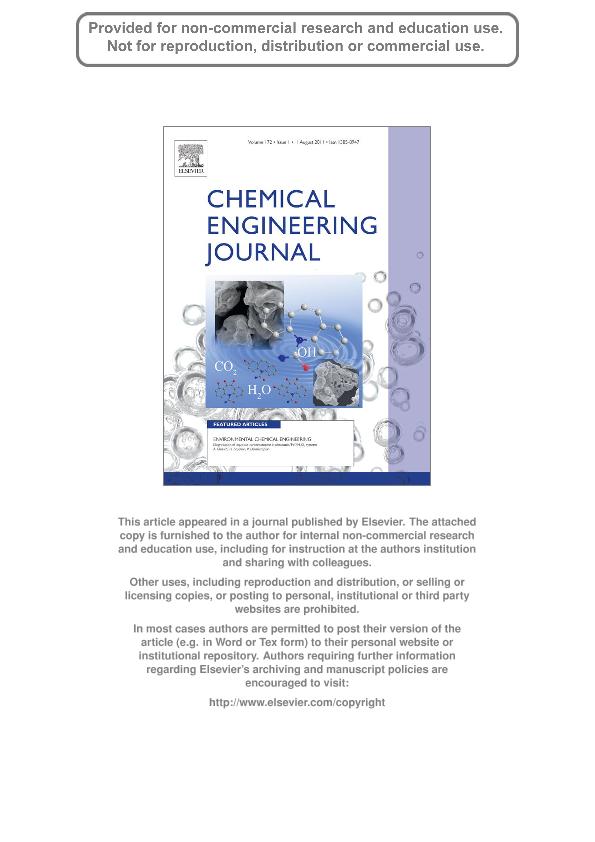Artículo
Application of biological indices and a mathematical model for the detection of metal coagulant overload in a laboratory scale activated sludge reactor with phosphate simultaneous precipitation
Fecha de publicación:
08/2011
Editorial:
Elsevier Science Sa
Revista:
Chemical Engineering Journal
ISSN:
1385-8947
e-ISSN:
1873-3212
Idioma:
Inglés
Tipo de recurso:
Artículo publicado
Clasificación temática:
Resumen
Phosphorous simultaneous precipitation by coagulants reduces the volatile solids percentage which can be deleterious to the biological process. In this work a mathematical model was developed and biological indices were applied to control Fe(III)-dosed activated sludge systems. A molar ratio Fe:P = 1.9–2.3:1 on the aeration basin of a laboratory-scale activated sludge reactor caused a progressive enrichment of the sludge with inorganic solids deteriorating the system performance. Crawling and attached ciliates were the most sensitive organism groups to these changes. The proposed mathematical model estimated: (i) the threshold concentration of fixed suspended solids, above which the reactor performance deteriorates, and (ii) the decay of the most sensitive organism groups with time. The Shannon–Wiener and sludge biotic indices predicted the decrease of the reactor performance by coagulant overload. The simultaneous application of the mathematical simulation and the biological indices guarantees a successful control of systems operated with phosphorous simultaneous precipitation by Fe(III).
Archivos asociados
Licencia
Identificadores
Colecciones
Articulos(CIDCA)
Articulos de CENTRO DE INV EN CRIOTECNOLOGIA DE ALIMENTOS (I)
Articulos de CENTRO DE INV EN CRIOTECNOLOGIA DE ALIMENTOS (I)
Citación
de Gregorio, Carolina; Caravelli, Alejandro Horacio; Zaritzky, Noemi Elisabet; Application of biological indices and a mathematical model for the detection of metal coagulant overload in a laboratory scale activated sludge reactor with phosphate simultaneous precipitation; Elsevier Science Sa; Chemical Engineering Journal; 172; 1; 8-2011; 52-60
Compartir
Altmétricas




